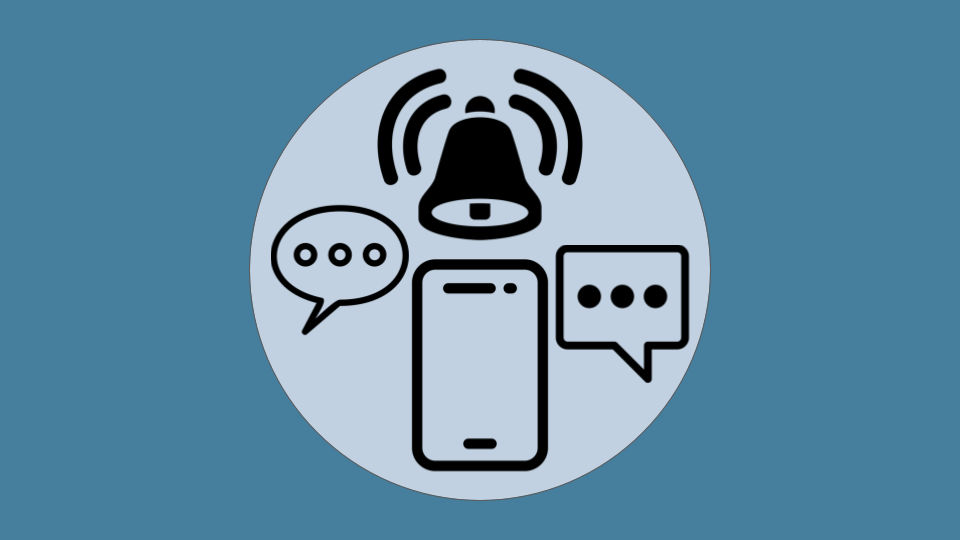5 Phone Friendly Bell-Ringer Activities

At some point in the semester, we all have those days: You saw some students in the hallway, but now that the bell has rung, they’re missing. You know they’ll come, but now the stragglers are holding up the class and “What did you do last weekend?” just isn’t cutting it anymore. Quick bell-ringers are a great solution to fill the time and warm up your students, and if you build fun ones into your schedule regularly, you might just encourage students to put a little pep in their step on the way to class so they don’t miss out.
Previously, I wrote about some no-prep activities using photo apps, and any of those would fit into this category well. Today we’ll add in some non-photo-based activities to add to your repertoire.
1. Home Screen Sentence Builder
Have students open their phone to their home screen (or slide one or two pages over — flexibility is fine here!) and have them try to write sentences using as many of the app or folder names as possible. Some may find this hard if they’ve got a lot of apps with proper nouns for names like “Duolingo,” but you can also encourage them to get creative by splitting up the words. Giving them a few hints like saying: “Hello is this the dermatologist? I’m calling because my brother has a big pimple on his face. Book an appointment for him as soon as possible!” Give students two minutes to work in pairs and come up with as many sentences as possible, or for a more challenging game, make sure all of their sentences tell a coherent story. Call on a few groups to share what they came up with and vote on the funniest or most creative stories.
2. Birthday Buddies
This is a quick variation on the “Who Am I?” game where students ask yes/no questions to try to discover a celebrity with a matching birthday. Ask students to go to FamousBirthdays.com and enter their birthday. A list of celebrities will show up and they can choose one to use as the subject of the game. Important: not all celebrities are equally known, so encourage students to choose the most famous one they can find. Once they’re ready, other students in the group can start asking questions, trying to narrow down the celebrity. Depending on the level of your class, you can set parameters like “Twenty questions max” or “only yes/no questions.” As always, make adjustments to suit your needs!
3. Learning Landmarks
Opening up a map app, ask students to either type in “Landmark” or tap through the search categories to find something like “Attractions.” Most areas will have a surprising number of local historical points, even if it’s something as simple as a plaque commemorating a previous mayor. Have students share what they find with a partner and ask if they’ve been to the location in question or if they even knew about it. Often the answer will be no, so you can challenge them to go there before the next class and take a picture. This simple activity can help them build a stronger connection to where they live and learn a little culture and history at the same time!
4. Song Explorer
In small groups, have one student play the last (classroom-friendly) English song they played in their music app. Another student should look up the lyrics and display them for the group to see. As a group, students can discuss the lyrics and try to dissect the meaning. Challenge students to avoid looking up the meaning online, and instead just focus on what they think it means. Remind them that the goal is not to be right or wrong, but to think about the English they know and how it’s being used in the songs they like. This activity may take a few extra minutes, so you may encourage students to skip to their favorite part of the song rather than playing the whole thing through.
5. App Archeologist
We’ve all got those apps that we downloaded once, never used again, and forgot what it was. This is a fun way to get students guessing about those dusty old apps and seeing who (if anyone) has the best sense of things. One student in the group will look for an app whose purpose they’ve long forgotten. Using only the icon and the title of the app, each student will make a guess at what the app is. After everybody has made their guesses, the student can open the app and try to figure out what it was for. Warning: just like real archeology, “opening the box” doesn’t always tell us the answer. Some students will discover they still can’t figure it out, and others still will find that the app no longer works. It’s all part of the fun of unearthing digital treasures. Of course, you can always encourage them to delete the app after they’ve played the game.
Remember that bell-ringers aren’t meant to be strenuous — just the opposite, in fact. Use quick activities like this to help students get in the mindset of the classroom and to be ready to move onto the more challenging content of the day without too much time-wasting. We’re all better off learning from each other, so if you’ve got your own bell-ringers, I’d love it if you’d drop them in the comments below!

